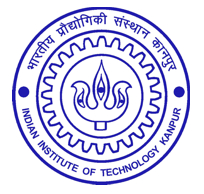N. G. P, S. Routray and K. P. Pradhan
Assessment of Analog/RF performances for 10 nm Tri-metal Gate FinFET
2020 4th IEEE EDTM; 2020, pp. 1-4
Penang, Malaysia
DOI: 10.1109/EDTM47692.2020.9117846
Abstract: Reduction in parasitic capacitance and resistance in FinFET is quite necessary in order to achieve high performance. In this paper, an intensive study on structural advancement in three different ways is implemented in basic FinFET structure such as (a) addition of thin silicide layer as interfacial layer between the contact and source/drain (b) extended and elevated source/drain (c) addition of hybrid spacer. Additionally, comparative study on the analog and RF performance is performed and analyzed for this structure between single material gate (SMG) and tri material gate (TMG) FinFET with all above enhancements. The analog parameters that have been analyzed are transconductance (gm), transconductance generation factor (TGF), output conductance (gd), and intrinsic gain (gm/gd). Similarly, the RF parameters like gate capacitance (CGG), cut-off frequency (fT), transconductance frequency product (TFP), gain frequency product (GFP), and gain transconductance frequency product (GTFP) are reported. Even though there is a degradation in the mobility for the TMG FinFET, but on a whole provides better performance. Furthermore, the effect of temperature on the drain current and transconductance has been shown for the TMG structure by varying the temperature from 200 to 350K with intervals of 50K which would be the extension to this paper. Analysis gives a potential overview on different structural improvement in order to achieve higher performance.
Fig. I. Top view of the proposed FinFET structure
Fig. II. (a) Gate capacitance (b) cutoff frequency (c) intrinsic delay (d) TFP (e) GFP (f) GTFP plots by variation of gate material.






